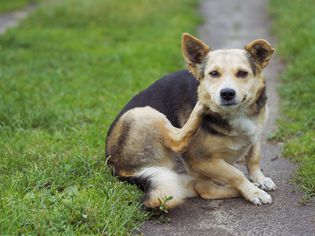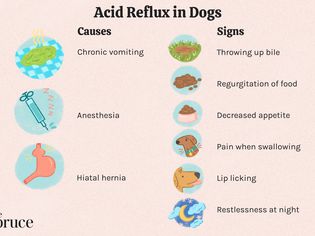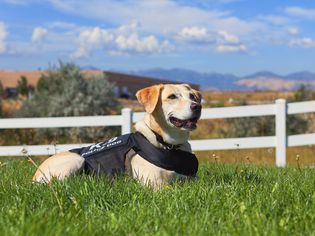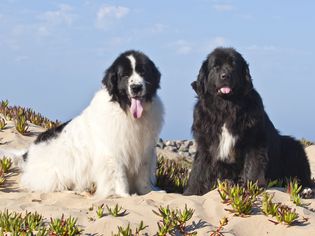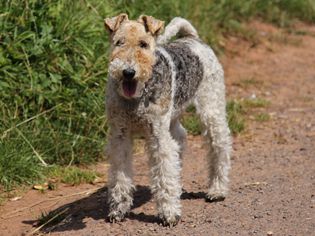The Czech shepherd is a medium-size herding dog breed from the Czech Republic that has a medium-length, wavy coat and overall looks very similar to a German shepherd.
This dog has a well-proportioned, compact build with erect ears and an elongated neck, and they move with a fluid, graceful gait. Czech shepherds are generally very bright, alert, and loyal to their family. They also are quite rare, making acquiring a Czech shepherd difficult for most people.
Learn more about the Czech shepherd, from care requirements to temperament and more.
Breed Overview
Group: Herding
Height: 19.3 to 20.5 inches (females), 20.5 to 21.7 inches (males)
Weight: 37 to 53 pounds (females), 41 to 60 pounds (males)
Coat: Medium-length, wavy double coat
Coat Color: Black and tan
Life Span: 12 to 15 years
Temperament: Friendly, active, intelligent
Hypoallergenic: No
Origin: Czech Republic
Characteristics of the Czech Shepherd
The Czech shepherd generally has a friendly personality and is very affectionate with family. Their temperament also is marked by a moderate energy level and high intelligence, making exercise and mental stimulation a must.
This breed is similar in appearance to the German shepherd, but weighs less and is a bit more agile, if you can believe it.
| Affection Level | High |
| Friendliness | High |
| Kid-Friendly | High |
| Pet-Friendly | Medium |
| Exercise Needs | Medium |
| Playfulness | Medium |
| Energy Level | Medium |
| Trainability | High |
| Intelligence | High |
| Tendency to Bark | Medium |
| Amount of Shedding | Medium |
History of the Czech Shepherd
The Czech shepherd breed can trace its roots back all the way to the 14th century in what’s now know as the Czech Republic. People bred them to be loyal guard dogs for their property and family. And they used them for herding and other farm work. The government in Czechoslovakia also regulated a breeding program to breed these dogs to be used for protection of their border.
The dogs were developed for their family-friendly temperament and working abilities rather than looks. The breed remained rare throughout the centuries and largely limited to the Czech Republic lands.
In the 1980s, a breed standard finally was established, with the first puppies bred according to this standard being born in 1985. It wasn’t until 2019 that the American Kennel Club accepted the breed into its Foundation Stock Service, a program that keeps track of rare purebred dogs.
Czech Shepherd Care
Czech shepherds prefer an active lifestyle, and they generally take well to training. Their medium-length coat does shed a moderate amount, but grooming a Czech shepherd is fairly easy.
These dogs can be great family pets, as they can be calm, non-aggressive, and good around kids.
Exercise
Czech shepherds enjoy being active and should receive at least an hour of exercise per day. Ideal activities include walks, jogging, hiking, and vigorous games of fetch.
Dog sports, such as agility and herding, also are great ways to burn both mental and physical energy. When they receive sufficient exercise, Czech shepherds are typically calm in the house and happy to cuddle on the couch.
It’s important to keep in mind that due to this breed’s heavy coat, they don't tolerate hot weather well, so limit outdoor exercise sessions in the heat.
Grooming
Plan to brush your dog’s coat at least once a week to remove loose fur and prevent tangles and mats. Your dog will likely experience seasonal periods of higher shedding, often in the spring and fall, at which time you should increase your brushing frequency to keep up with the loose fur.
A bath roughly once a month should suffice, depending on how dirty your dog gets. Check their nails monthly as well to see whether they’re due for a trim. Plus, look in their ears at least weekly for wax buildup, debris, and other irritation. Finally, aim to brush your Czech shepherd's teeth every day.
Training
Czech shepherds typically are eager to please and pick up on training cues quickly. They are often trained for protection due to their protective nature and strong bite (stronger than a Malinois). Proper training will ensure they are only aggressive in situations that require it.
Begin both training and socialization from a young age. A puppy obedience class is ideal for your dog to learn basic skills and manners. Also, aim to expose them to different people, other dogs, and various locations from an early age to boost comfort and confidence.
It’s important to be consistent in training cues and always use positive training methods. These dogs can be sensitive at times, and harsh corrections can cause them to shut down and not learn. They also like varied training sessions to keep them mentally engaged.
Common Health Problems
The Czech shepherd is a relatively healthy breed, but it is still prone to some hereditary health issues, including:
- Hip and elbow dysplasia: These orthopedic problems affect the hip and elbow joints. They cause pain and difficulty walking, so they need to be addressed by a vet.
- Degernative myelopathy: This serious condition causes degeneration of the white matter of the spinal cord, eventually leading to paralysis of the hind legs and then front legs.
- Epilepsy: This neurological disease causes seizures, which cause uncontrolled movements. This needs veterinary attention.
Diet and Nutrition
Always make sure fresh water is accessible to your dog. Feed a high-quality, nutritionally balanced canine diet. It’s typical to feed two measured meals per day to prevent overeating. But make sure to discuss both the food type and amount with your veterinarian. And be mindful of feeding too many treats and table scraps to prevent your Czech shepherd from gaining excess weight.
Where to Adopt or Buy a Czech Shepherd
The Czech shepherd is a rare breed that you're not likely to encounter in North America. But it's still worth checking animal shelters and rescue groups for a dog in need of a home. See whether animal shelters have a breed wait list that you can get your name on.
Moreover, the American Kennel Club does not list any Czech shepherd breeders. So if you're interested in acquiring the breed, you might have to contact breeders in the Czech Republic.
Czech Shepherd Overview
Czech shepherds have many characteristics that make them attractive and wonderful companions. They make great pets because they love their family, and they’re also protective if you want a guardian.
Pros of Czech Shepherds
- Generally friendly and affectionate
- Usually good with kids
- Typically takes well to training
Cons of Czech Shepherds
- Can be difficult to find at rescues and breeders
- Can be sensitive at times
- Doesn't tolerate heat well
More Dog Breeds and Further Research
Always do diligent research before bringing a dog home to make sure the breed is right for your lifestyle. Talk to Czech shepherd owners, veterinarians, rescue groups, and reputable breeders to learn more.
If you’re interested in similar breeds, check out:
- Belgian Malinois
- Dutch Shepherd
- German Shepherd
There’s a whole world of potential dog breeds out there—with a little research, you can find the right one to bring home!
- What’s the difference between Czech shepherds and German shepherds?
The Czech shepherd and German shepherd look very similar, largely thanks to their typically black-and-tan coats and upright ears. However, Czech shepherds tend to be slightly smaller than German shepherds, with a more compact build.
Are Czech shepherds good family dogs?With proper training and socialization, Czech shepherds can be excellent family pets. They tend to be tolerant of children, though dogs should always be supervised around young children.
Are Czech shepherds aggressive?Czech shepherds are typically a friendly breed that does not display aggression, as long as they have training and socialization. They might alert you to perceived threats, but they generally are open to meeting strangers.

